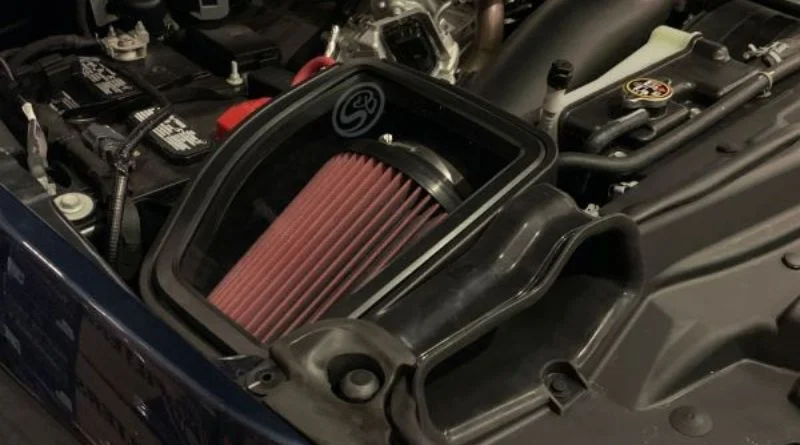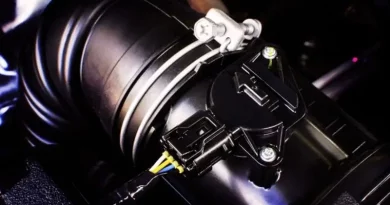DIY Cold Air Intake Installation And Maintenance Guide: Tips And Advice To Maximize Your Car’s Performance
Are you looking for a way to boost your car’s horsepower, torque, and acceleration? Consider installing a cold air intake system. This upgrade can help increase the amount of cool air flowing into your engine, resulting in improved combustion and more power.
But before you start the installation process, it’s important to understand the basics of how a cold air intake works and what factors to consider when choosing a system. In this article, we’ll walk you through the step-by-step installation process and provide helpful maintenance tips to keep your cold air intake performing at its best.
Understanding Cold Air Intakes
A cold air intake system is designed to bring cool air into your engine’s combustion chamber, replacing the hot air that is typically drawn in by the factory air intake system. Cooler air is denser and contains more oxygen, which can help improve combustion and increase horsepower and torque.
A typical cold air intake system consists of a specially-designed air filter, intake tube, and heat shield. The air filter is often located in the engine compartment, away from the hot air generated by the engine. The intake tube is designed to bring cool air from outside the car into the air filter, while the heat shield helps prevent hot air from entering the intake system.
Choosing The Right Cold Air Intake System
When choosing a cold air intake system, there are several factors to consider. First, make sure the system is designed specifically for your car’s make, model, and year. You’ll also want to consider the material and construction of the intake tube and air filter, as well as the system’s overall design.
Another important factor to consider is the location of the air filter. Some systems place the filter in the engine compartment, while others locate it outside the car to take advantage of cooler outside air. Consider your driving habits and the conditions in which you typically drive when choosing a system. You can also read reviews of the cold air intake on Intakeasy.
DIY Cold Air Intake Installation Guide
Before you begin the installation process, it’s essential to make sure you have all the necessary tools and materials. You’ll need a socket set, pliers, a screwdriver, a drill, and the cold air intake kit. It’s also a good idea to read the manufacturer’s installation instructions and watch some installation videos to get a better understanding of the process.
Step 1: Remove the Old Air Intake System
Start by disconnecting the battery to prevent any electrical mishaps. Then, remove the old air intake system by disconnecting the air filter housing, the intake tube, and the mass airflow sensor. Be sure to keep any bolts, nuts, or clamps in a safe place.
Step 2: Install the New Cold Air Intake System
Next, install the new cold air intake system by following the manufacturer’s instructions. Typically, this involves mounting the air filter housing, the intake tube, and the mass airflow sensor in their respective locations. Make sure all connections are tight and secure and avoid over-tightening any bolts or clamps.
Step 3: Reconnect the Battery and Test Drive
After you’ve installed the new cold air intake system, reconnect the battery and start your car. Let it idle for a few minutes to make sure everything is running smoothly. Then, take it for a test drive to see how the new cold air intake has improved your car’s performance.
DIY Cold Air Intake Maintenance Guide
Now that you’ve installed your new cold air intake, it’s important to keep it clean and well-maintained to ensure optimal performance. Here are some tips and advice for maintaining your cold air intake:
1. Clean the Air Filter Regularly
The air filter is the most important component of your cold air intake system, as it filters out dirt, dust, and debris from the air before it enters the engine. Be sure to clean the air filter regularly, as a dirty or clogged filter can restrict airflow and reduce performance. To clean the filter, remove it from the housing and gently wash it with soap and water. Let it dry completely before reinstalling it.
2. Inspect the Intake Tube and Housing
Regularly inspect the intake tube and housing for any signs of damage or wear. Look for cracks, holes, or loose connections, and replace any damaged components immediately.
3. Check the Mass Airflow Sensor
MAF measures the amount of air entering the engine and sends that data to the car’s computer. Be sure to check the sensor regularly for any signs of damage or contamination, and clean it with a mass airflow sensor cleaner if necessary.
4. Use High-Quality Cleaning Products
When cleaning your cold air intake system, be sure to use high-quality cleaning products specifically designed for automotive use. Avoid using harsh chemicals or abrasive cleaners that can damage the components.
Consider Upgrading Your Air Filter
If you want to get even better performance out of your cold air intake system, consider upgrading your air filter to a high-performance filter. These filters can increase airflow even further and improve horsepower and torque.
By following these tips and advice, you can ensure that your cold air intake system is well-maintained and performing at its best. By taking good care of your cold air intake, you can maximize the benefits of this upgrade and get the most out of your car.
Wrap-UP
Installing a cold air intake system can be a great way to boost your car’s performance, but it’s important to follow the proper installation and maintenance procedures to ensure optimal results. By following the step-by-step installation guide and using the recommended maintenance tips, you can keep your cold air intake in top condition and enjoy improved horsepower, torque, and acceleration.
Remember, always prioritize safety when working on your car. If you’re unsure about any aspect of the installation or maintenance process, seek the advice of a professional mechanic or experienced car enthusiast. With proper care and maintenance, your cold air intake system can provide years of improved performance and driving enjoyment.




